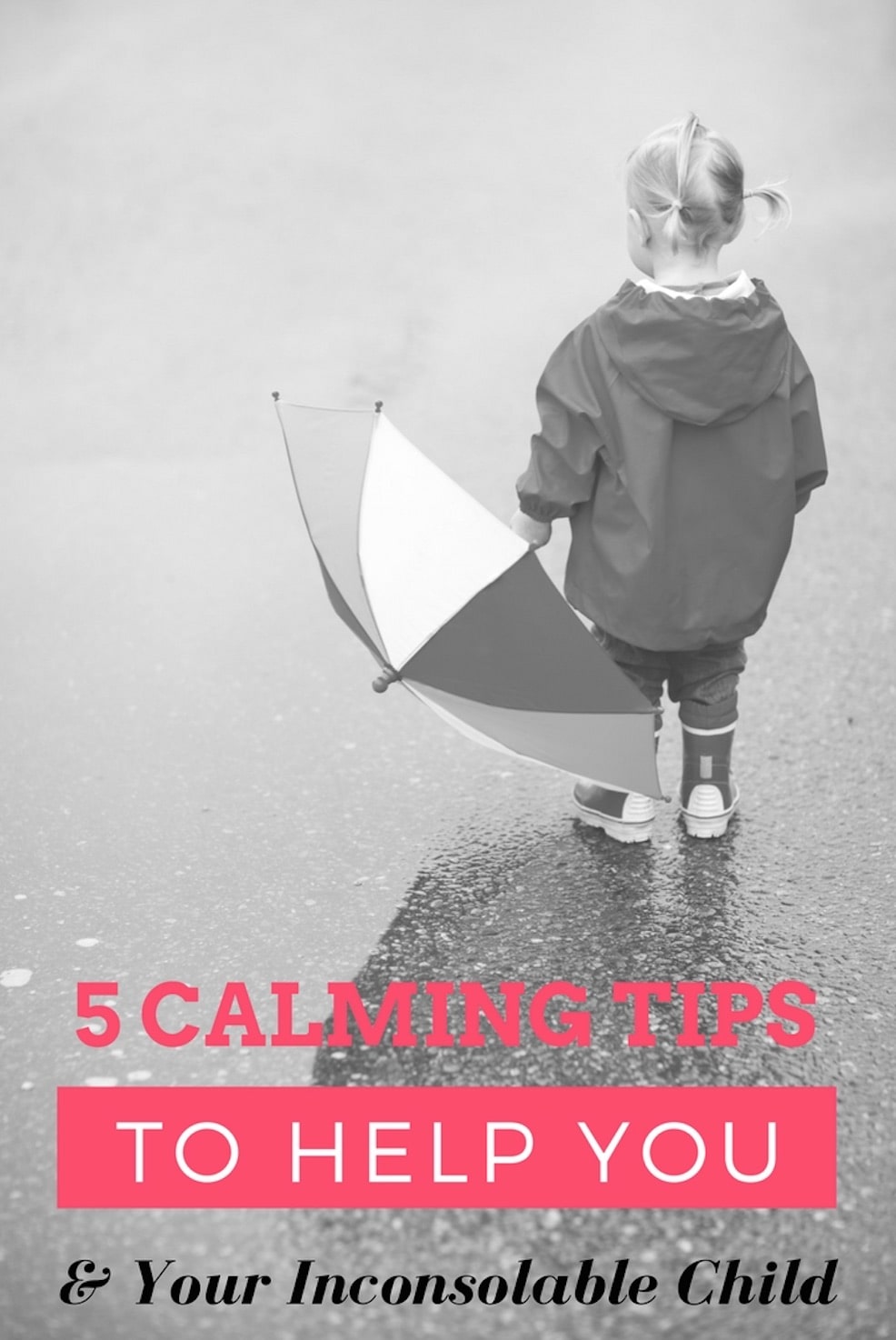A Guest Post from: Lychelle Hollback
Meltdowns come in all shapes and sizes. The biggest and baddest are sure to bring even the most seasoned and composed moms to their knees. Whether your child is hurt, scared or just being naughty it can be extremely difficult to calm them down. As the adult in the situation, we’re expected to keep our cool and help our little ones work through their emotions but, as we all know, nothing works us up as much as an inconsolable child. Depending on the situation, the kids are not the only ones who need to calm down. These five tips have proven invaluable for my kids and myself.
5 Calming Tips to Help You and Your Inconsolable Child
#1—Take 10 deep breaths, counting each one as you go.
This one is my go-to calming technique for my oldest son. He feels all of his emotions very strongly and has a hard time relaxing once he’s worked up. When he had to spend some time in the hospital last year, this was the only way to get him to calm down when he was in pain and terrified. It also helped me to keep my composure which, as you can imagine, is the hardest thing in the world when your child is in pain. We use this one at almost every doctor appointment now. Here’s an example of how to do it: Together, take a deep breath in through your nose and then slowly let it out through your mouth. Say out loud, “One”. Repeat the breathing and say, “Two”. Continue up until 10. In some situations, your child may only need to count to 3 or 5.
#2—Sit or kneel to their eye level, hold their hands and make gentle eye contact.
I use this technique more when I need to explain to my very unhappy child why they’re in trouble or why I didn’t allow them to do something. I’ve noticed that my toddler, especially, responds better to me when I get on his level, physically. I keep his attention by holding his hands and looking in his eyes. My goal is to look at him with love and understanding. I’ve also noticed that I’m less likely to yell when I’m on his level. It’s not so easy to yell when those big, sad toddler eyes are right in front of you.
#3—Don’t raise your voice. Talk to your child in a calm voice between their yelling or screaming.
I know tis can be a challenge when your patience thins but trying to talk over your child, even with the best of intentions, can easily turn into yelling. One thing I’ve learned is that yelling at an already worked up child is hardly ever effective. In fact, it almost always escalates the situation and that only makes everyone more frustrated. As much as I hate to admit it, I have a hard time not raising my voice. Focusing on only talking to my kids between cries helps me to keep my voice at a more reasonable tone. This is also a good way to get your child’s attention long enough to get them to start their breathing and counting.
#4—Hugs! Hold and reassure your little one of your unconditional love.
Whether your child is reacting to the consequences of their own behavior or they are simply scared, a hug can work wonders. That hug can also be therapeutic for you. It’s a great opportunity to reassure your child of your love for them and for “I’m sorry” and “I forgive you”. As my mom always says, “There is nothing you could ever do to make me stop loving you.” I repeat this to my older son quite often. He tends to be really hard on himself when he’s done something naughty and my reassurance, combined with a hug, is often the only way to calm him down.
#5—Distract them with fun or your sense of humor
We all know that there will be times when our kids overreact. From my experience, telling them they’re overreacting rarely helps. Offering a distraction is a great way to get a younger child’s mind off of whatever may have started the outburst. It can be a little trickier with older kids, that’s where doing something funny comes into play. Once you get that first smirk out of them, it’s game over and they know it. Now, if you’re uncomfortable with looking completely ridiculous, this tip is not for you.
My ability to stay calm when my child is frantic has definitely improved with my second child. I wish I had known about all, or even one, of these techniques when I was experiencing my first round of the “terrible twos”. Obviously, all of these won’t work for every child, but I can say without a doubt that staying calm and keeping your cool when your child becomes inconsolable is the absolute best thing you can do.
Stay strong, mommas! These days won’t last forever.



Leave a Reply